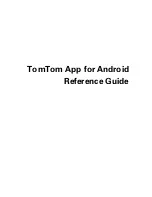
210
•
SSH and SFTP Client Reference
HP NonStop SSH Reference Manual
•
"put txe txe,700": will create a code 700 file
•
"put bigfile bigfile,0,500,500,950": will create a file with ext (500,500) and maxextents 950
•
"put keyseq keyseq,k,0,2,2,500,255,100,0,2048": will create a keysequenced file with ext(2,2), maxextents 500,
recordlen 255, keylen 100, keyoff 0, blocklen 2048
•
"put relative relative,r:" will create a relative file
•
"put entryseq entryseq,e": will create an entry sequenced file
•
"put ascii editfile,101": will create a guardian edit file
Refer to the
TCP/IP Applications and Utilities User Guide
, chapter "Communicating with the FTP Server", section
"Transferring Structured Files" for a detailed description of this extended syntax.
Transfer Modes for Structured Guardian Files
The previous section described how to specify Guardian file attributes. This section introduce transfer modes, i.e.
different ways to transfer structured files.
Per default, each logical record of a structured file is read and an end-of-record delimiter is added: LF ("\n") before the
record is transferred. This transfer mode (delimited record transfer mode) corresponds to the FTP ASCII transfer of
structured files (STRUCT R). Additionally, the following two transfer modes are supported: transparent transfer of
records, and unstructured transfer of structured files.
The transparent transfer mode allows transferring records containing LF (“\n”) characters inside a record. These files
cause problems when being transferred in delimited record transfer mode as this character is used as end-of-record
delimiter. This problem does not occur in transparent transfer mode but this mode can effectively be used for transfers
from one NonStop server to another only (other SFTP implementations are not aware of the transparent mode
implementation).
The unstructured transfer mode uses the Guardian option 'unstructured access of structured files' when opening a
Guardian structured file. If the unstructured mode is enabled, SFTP and SFTPSERV read the structured file physically
rather than logically (record by record). This transfer mode corresponds to the FTP BINARY transfer of structured files
(STRUCT F). Files can only be read in unstructured transfer mode, i.e. if NonStop SFTP command ‘put’ is used or a
remote sftp client issues a ‘get’ command against SFTPSERV on NonStop.
The transfer mode is specified by adding one of the following three characters after the file name, separated by a comma
(no space allowed):
•
D for delimited record transfer mode.
•
T for transparent record transfer mode.
•
U for unstructured transfer mode.
Examples:
1.
A file named relseq1 needs to be read record by record, each transferred with the delimiter LF appended:
sftp> get relseq1,d
This is identical to
sftp> get relseq1
as transfer mode D is the default transfer mode.
2.
An entry-sequenced file is to be transferred from a NonStop server to a Unix host:
sftp> put entryseq,u entryseq
The transfer mode and file attributes can be used at the same time; the transfer mode is appended to the file
name first, then file attributes:
<file>,<transfer-mode>,<file-attributes>
Summary of Contents for NonStop SSH 544701-014
Page 12: ...xii Contents HP NonStop SSH Reference Manual ...
Page 24: ...24 Preface HP NonStop SSH Reference Manual ...
Page 30: ...30 Introduction HP NonStop SSH Reference Manual ...
Page 46: ...46 Installation Quick Start HP NonStop SSH Reference Manual ...
Page 132: ...132 The SSH User Database HP NonStop SSH Reference Manual ...
Page 214: ...214 SSH and SFTP Client Reference HP NonStop SSH Reference Manual ...
Page 278: ...278 STN Reference HP NonStop SSH Reference Manual ...
Page 298: ...298 Monitoring and Auditing HP NonStop SSH Reference Manual ...
Page 302: ...302 Performance Considerations HP NonStop SSH Reference Manual ...
















































